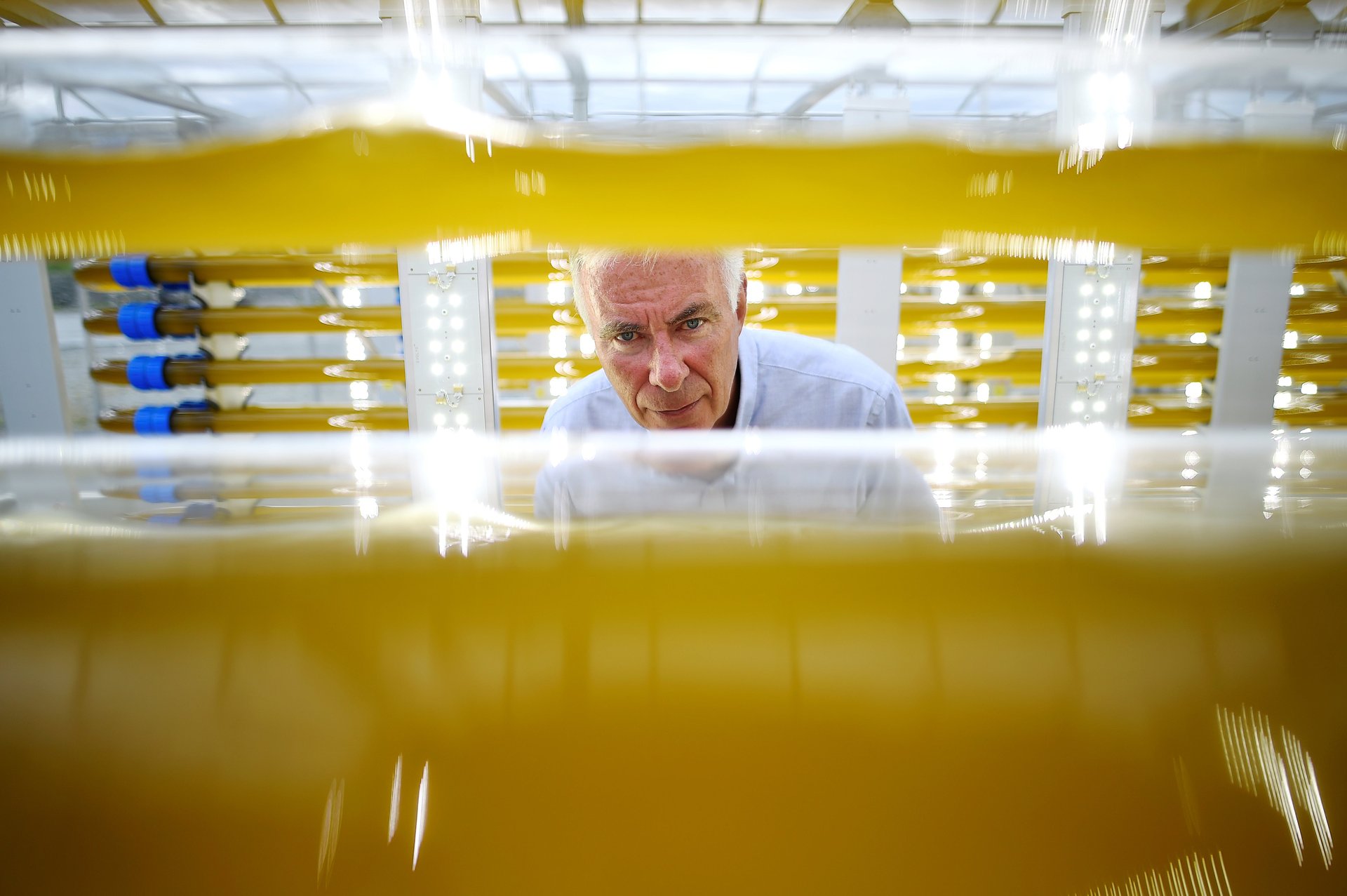Can algae save the planet by changing the way we eat?
If you had to imagine what we will be obsessing over in 50 years, what would top your list? We put versions of that question to dozens of entrepreneurs, scientists, academics, and artists, including Richard Branson, Temple Grandin, Ian Bremmer, Ann Kim, and Bright Simons. From their 550 answers, some clear themes emerged. One such theme: Algae.


If you had to imagine what we will be obsessing over in 50 years, what would top your list? We put versions of that question to dozens of entrepreneurs, scientists, academics, and artists, including Richard Branson, Temple Grandin, Ian Bremmer, Ann Kim, and Bright Simons. From their 550 answers, some clear themes emerged. One such theme: Algae.
If you’ve only heard about the negative aspects of algae, like how its blooms clog waterways and kill off species, you’re missing half the story. Now scientists and engineers are discovering new ways to harness algae’s unique qualities. They are putting it on our plates, using it to sequester carbon dioxide, even making sneakers out of it. Proponents are touting algae as a way to break some of our most damaging habits, from petrochemical use to eating meat. If the trend continues, perhaps algae will have helped us mitigate some of the effects of climate change.
Many of the experts we spoke with for the World in 50 Years project thought algae would make a difference in the trajectory of our species in the next 50 years. Here are some of their answers:
What will we eat?
Algae and meat grown in industrial vats. Ugh. –Isabel Allende, author
Algae-derived food and drink that taste better than the best Michelin three-star meals of 2019. –George Church, professor of genetics, Harvard Medical School
Agriculture and food will change more in the next 50 years than they have in the last 10,000 years. We now have the tools to engineer slaughter-free meats and fish. Cell-based meats (sometimes called lab-grown meats) will be commercially available at competitive price points in the next five to 10 years. Expect to see beautifully crafted T-bone steaks made purely from cells, and even more interesting, functional foods that are engineered with both an experiential perspective and also a functional/health perspective.
Food production technologies will continue to improve, with hydroponic farms like Plenty producing incredible, fresh produce not grown in fields (sparing both the beneficial insects and animals). We’ll also see the continued global rise of genetically engineering plants, fungi, bacteria, and algae to provide tailored, affordable nutrition to all of the world’s 10 billion-plus people. Inexpensive, delicious, and incredibly nutritious foods will be expected and delivered on even the most meager budgets, thanks to technology and biotechnology worldwide.
Thankfully, we’ll also see a rewilding of rainforests, savannas, and oceans thanks to the removal of our fishing and farming pressures with the end of animal agriculture (a 10,000-year-old technology that is now unsustainable). –Ryan Bethencourt, co-founder and CEO, Wild Earth
What will the biggest change to our natural world be?
(A) Reversal of pollution and climate change via ocean algae and arctic grass (and cold-resistant elephants).(B) Concentration of people in cities (already shown to have a positive impact on efficiency and environmental quality).
(C) Dozens-fold higher food productivity per square km via rapidly replicating photosynthetic (bio)chemistry.
–George Church, professor of genetics, Harvard Medical School
To read more answers, visit the World in 50 Years project.